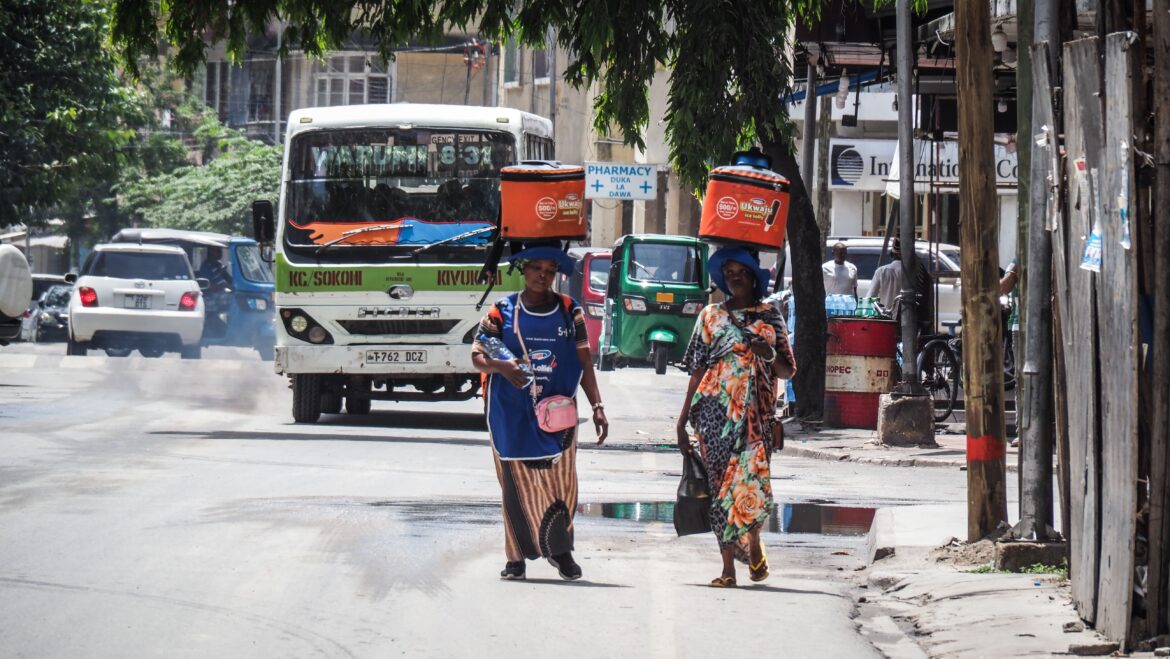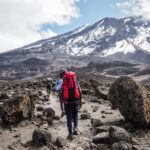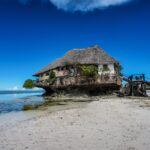Dar es Salaam is the largest city and main commercial hub of Tanzania, located along the eastern coast of the country on the Indian Ocean. It started as a small fishing village before developing into an important port and trading centre during the 19th century. Later, under German and British colonial rule, it expanded further and eventually became the capital of Tanzania until the government shifted the administrative capital to Dodoma (though Dar es Salaam remains the country’s economic centre).
The name “Dar es Salaam” comes from Arabic, roughly meaning “Haven of Peace” or “Abode of Peace.” It was given in the mid-19th century by Sultan Majid bin Said of Zanzibar, who founded the settlement around 1865. The name reflects the city’s coastal role as both a safe harbour and a welcoming trade hub.
The history of Dar es Salaam
Early Beginnings
Before it became a city, the site of present-day Dar es Salaam was home to small fishing communities along the coast. The sheltered harbour made it a convenient spot for local trade with inland groups and for regional exchanges across the Indian Ocean.
Founded in the 19th Century
In the 1860s, Sultan Majid bin Said of Zanzibar established a settlement there. He gave it the name Dar es Salaam, meaning “Abode of Peace” in Arabic. He aimed to create a new trading town on the mainland that could complement Zanzibar’s commercial dominance. However, after he died in 1870, development slowed and the settlement declined in importance for a time.
German Colonial Era
In the late 19th century, the Germans arrived and made the town an administrative centre for their colony, German East Africa. They developed infrastructure, including roads, government buildings, and the port, and expanded trade routes to connect the interior with the coast. Dar es Salaam grew into a hub for exporting raw materials such as sisal, coffee, and cotton.
British Administration
After Germany’s defeat in World War I, the League of Nations mandated the territory to Britain. Under British rule, Dar es Salaam remained the administrative and commercial centre of Tanganyika. Railways, schools, and hospitals were expanded, and the population continued to rise, attracting African, Arab, Indian, and European communities.
Path to Independence
In the mid-20th century, the city became a focal point for nationalist movements pushing for independence. When Tanganyika gained independence in 1961, Dar es Salaam was the capital. It also became the capital of the newly united Tanzania in 1964, after Tanganyika and Zanzibar merged.
Post-Independence Growth
Even after the Tanzanian government decided in 1973 to relocate the capital to Dodoma (a plan still unfolding decades later), Dar es Salaam retained its dominance as the largest city and economic powerhouse. It has remained the country’s busiest port and a centre of finance, industry, and education.
Modern Era
Today, Dar es Salaam is one of the fastest-growing cities in Africa. It serves as a gateway for trade not only for Tanzania but also for landlocked countries in East and Central Africa, such as Zambia, Malawi, and the Democratic Republic of Congo. The city is a melting pot of cultures, with influences from African, Arab, Indian, and European heritage reflected in its architecture, cuisine, and lifestyle.
How to get there?
By Air
Julius Nyerere International Airport (DAR) is the main gateway. It handles most international and domestic flights.
Direct international connections exist from cities in Africa, the Middle East, Europe, and Asia. You may need a layover in hubs such as Addis Ababa, Nairobi, Doha, Istanbul, or Dubai.
By Sea
Dar es Salaam has a large port that serves both cargo and passenger ferries. There are regular ferries from Zanzibar and other coastal towns. Some cruise ships also stop here.
By Land
Long-distance buses connect Dar es Salaam with major Tanzanian cities such as Dodoma, Arusha, Mwanza, and Mbeya. They also run to neighbouring countries like Kenya, Malawi, and Zambia.
You can drive to Dar es Salaam via Tanzania’s road network, but road conditions vary, so planning and a reliable vehicle are essential.
The Tanzania–Zambia Railway (TAZARA) links Dar es Salaam with Zambia, passing through southern Tanzania. Another line connects the city with central and northern Tanzania.

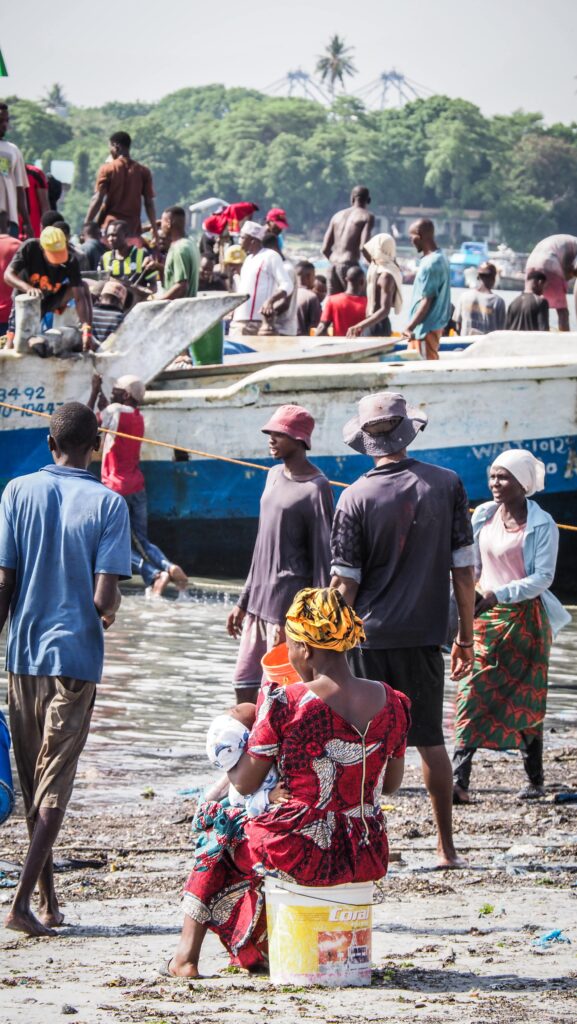
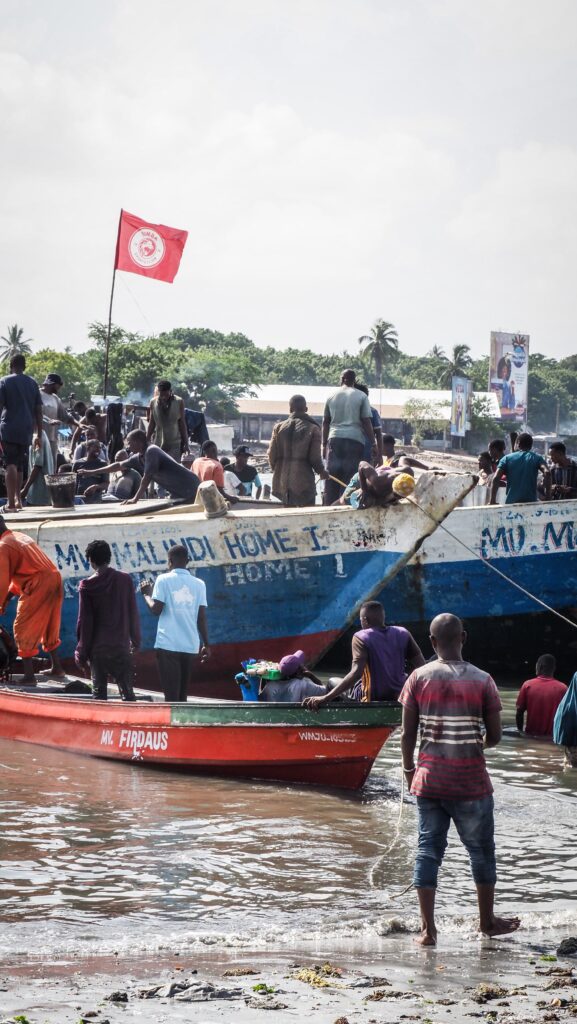
The best time to visit
Dry Season (June to October)
This is the most popular period for visitors. The weather is warm but less humid, and there’s very little rain. Ideal for beach activities, sightseeing, and trips to nearby islands or game reserves. It also overlaps with the peak safari season in Tanzania, so many travellers combine city visits with wildlife tours.
Hot Season (November to February)
Temperatures rise, and it can feel quite humid, but the city is lively. Good time for cultural experiences and festivals, though beaches may be less comfortable during the hottest days.
Rainy Season (March to May)
This period sees heavy rains, which can cause flooding and make travel less convenient. On the plus side, accommodation prices are usually lower, and the landscape is very green.
Where to stay?
During my several days’ stay in the city, I spent my nights in two budget-friendly accommodations:
Gallivanters Hostel is a budget accommodation in Masaki, but they also offer private rooms with shared bathroom, which are of good price and quality ratio.
Zimbo Golden Hotel is located in the city centre, near Kariakoo Market. The area is quite messy and chaotic, but it remains as authentic as possible, and I felt safe. The room was spacious, but the AC worked poorly. The breakfast included in the price was simple but acceptable.
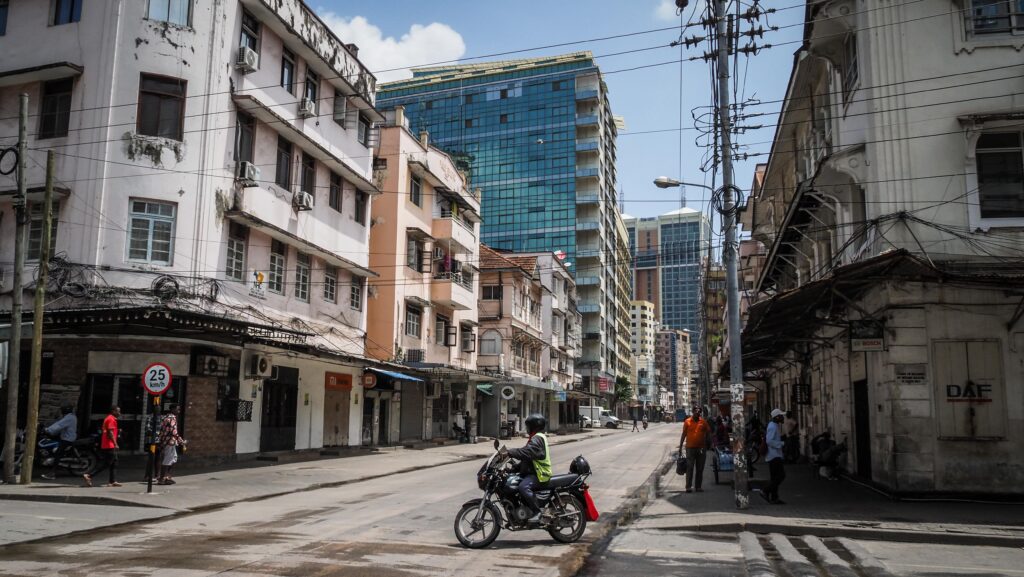
What to see in the city?
Fish Market
A great way to kick off the morning in Dar es Salaam is with a stop at the bustling Fish Market. At dawn, fishermen unload their fresh catch, turning the place into a lively scene of bargaining, shouting, and excitement. The energy is contagious as boats dock and baskets overflow with seafood. Once you’ve taken in the spectacle, cross over to the other side of Kivukoni Road, where you can sample some of the day’s catch – crispy, freshly fried, and full of flavor.
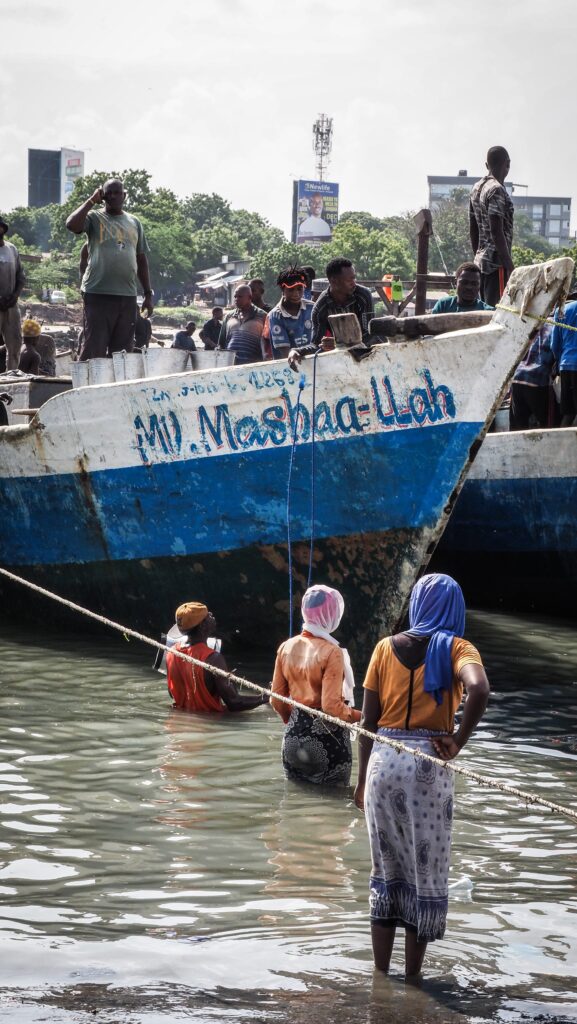
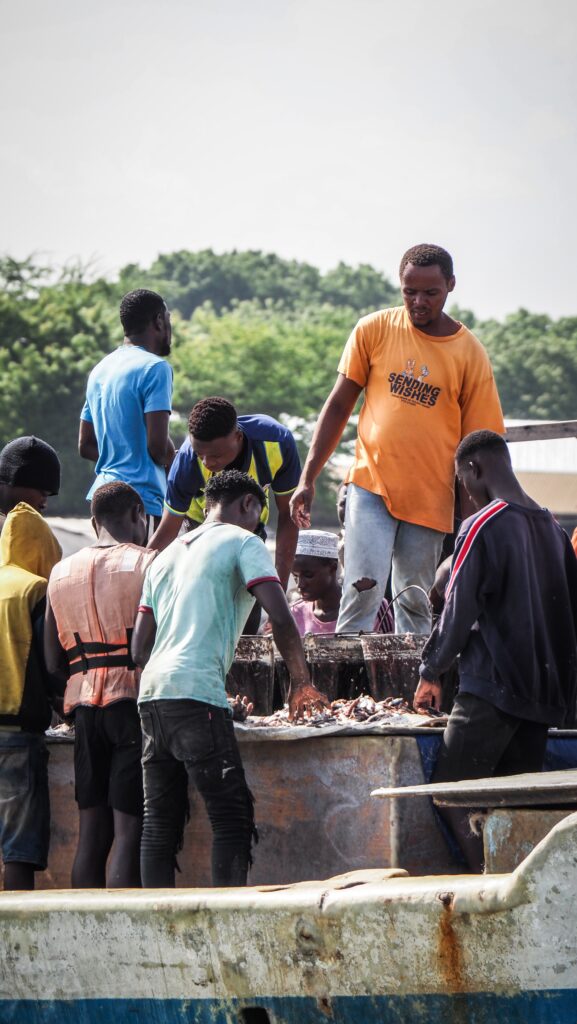

Azania-Front-Cathedral
It is a historic Lutheran church built during the German colonial period in the late 19th century, when the city was the administrative capital of German East Africa. Its design follows a neo-Gothic style, with a tall steeple, stained-glass windows, and pointed arches that reflect European church architecture of that era.
National Museum and House of Culture
The largest museum in Tanzania and an important place to learn about the country’s history, art, and cultural heritage. It was first established in the mid-20th century and has since grown into a center that showcases everything from prehistoric discoveries to modern traditions.
Inside, you’ll find exhibits on human evolution, including fossils linked to the famous finds from Olduvai Gorge, as well as displays on Tanzania’s diverse ethnic groups, colonial history, and the struggle for independence. The museum also features collections of traditional crafts, musical instruments, and contemporary art that highlight the richness of Tanzanian culture.
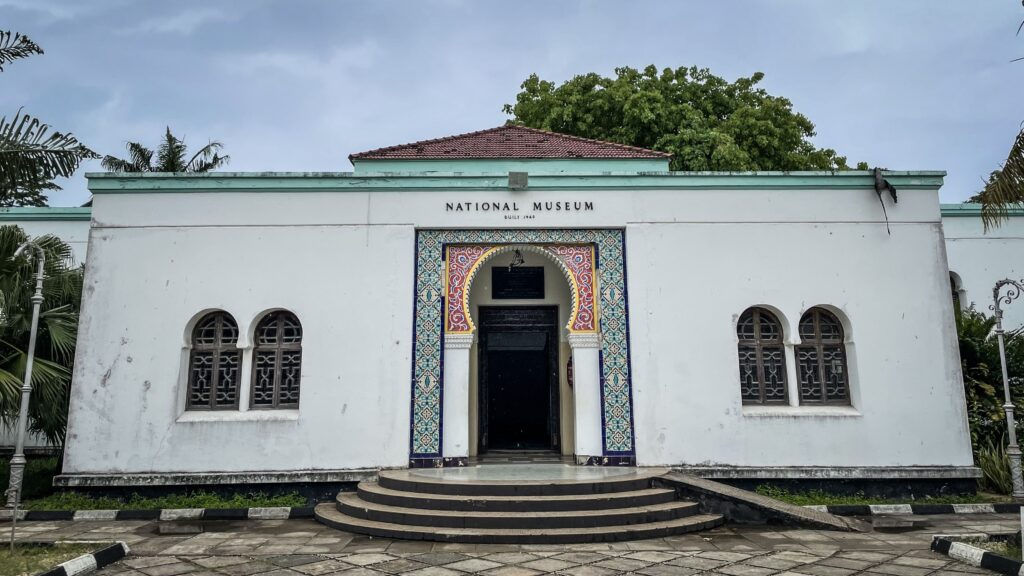
Botanic Gardens
A quiet green escape in the middle of busy town. They were first established during the German colonial era and were used as a testing ground for tropical plants. Though not very large, they make for a pleasant stroll.
Ocean Road Cancer Institute
Built in the early 20th century during German rule, the building originally served as a hospital. Over time, it was transformed into Tanzania’s main cancer treatment and research center. The historic architecture of the institute, set against the Indian Ocean, makes it a striking landmark.
Karimjee Hall
Another notable colonial-era landmarks. Built in the early 20th century with funding from the wealthy Karimjee family, it originally served as the City Hall during the British administration. Its grand architecture, complete with large columns and a distinctive clock tower, reflects the style of civic buildings from that period.
Over the years, Karimjee Hall played a central role in Tanzania’s political history. It even hosted sessions of the country’s parliament before the move to Dodoma. Today, the hall is used for official events, public functions, and sometimes cultural activities.
Asaki Monument
At the crossroad of Samora Ave and Nnamdi Azikiwe Ave stands the Askari Monument. It was unveiled in the 1920s to honor African soldiers who fought in World War I as part of the British colonial forces. The bronze statue shows a soldier holding a rifle, facing toward the harbor, symbolizing both defense and sacrifice.
Azam Roundabout
Not far away is the lively Azam Roundabout, a bustling junction that captures the energy of Dar es Salaam’s downtown. It’s named after the Azam group, one of Tanzania’s largest companies, and the roundabout is surrounded by shops, offices, and heavy traffic. For visitors, it’s less about sightseeing and more about experiencing the pulse of the modern city.
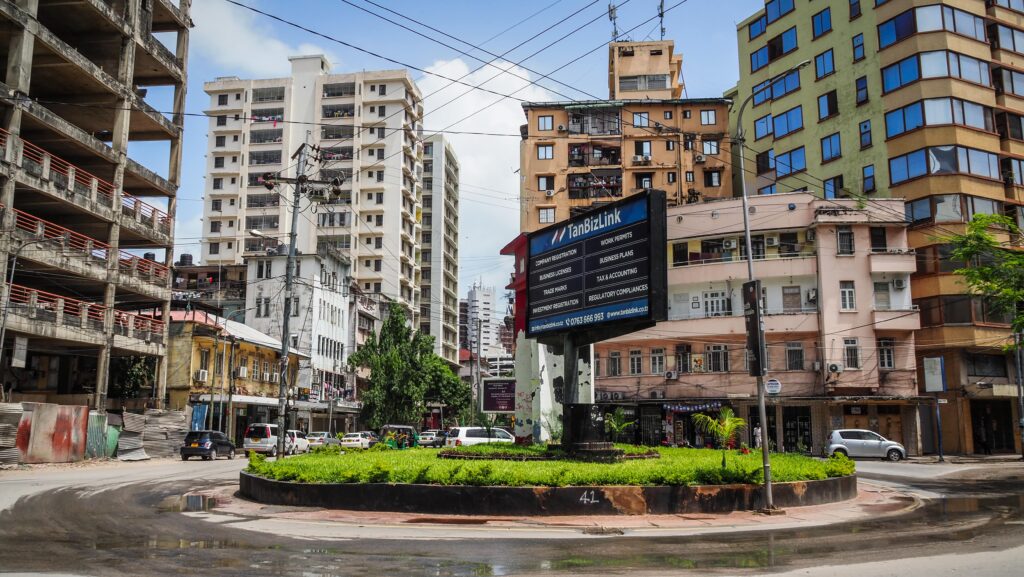
Little India
Around Kisutu Street, you’ll find a neighborhood with strong Indian influences. The streets are lined with spice shops, vegetarian restaurants, textile stores, and jewelry shops. It’s a part of Dar es Salaam where the Indian diaspora’s presence is most visible.
BAPS Shri Swaminarayan Mandir is one of the main centers for the Hindu community. Built in traditional style, it features carved details and shrines dedicated to Hindu deities. It’s a peaceful place of worship and an example of how immigrant communities, especially those of Indian origin, have shaped the cultural fabric of the city.
Another significant Hindu temple nearby is the Shree Shankar Ashram Mandir. Its architecture and colorful interior reflect Indian traditions, and it’s often a hub for cultural events, festivals, and ceremonies.
Old Boma
Built in the 1860s by Sultan Majid of Zanzibar, the Old Boma is one of the city’s oldest surviving buildings. It was originally part of the Sultan’s complex and later used by German colonial administrators. With its coral stone walls and carved wooden doors, it reflects a blend of Swahili and Arab architectural styles. Today, it houses cultural offices and exhibitions.
St. Joseph’s Cathedral
This striking Catholic cathedral was constructed by German missionaries in the late 19th and early 20th centuries. Its Gothic design, complete with tall spires and stained-glass windows, makes it stand out near the waterfront.

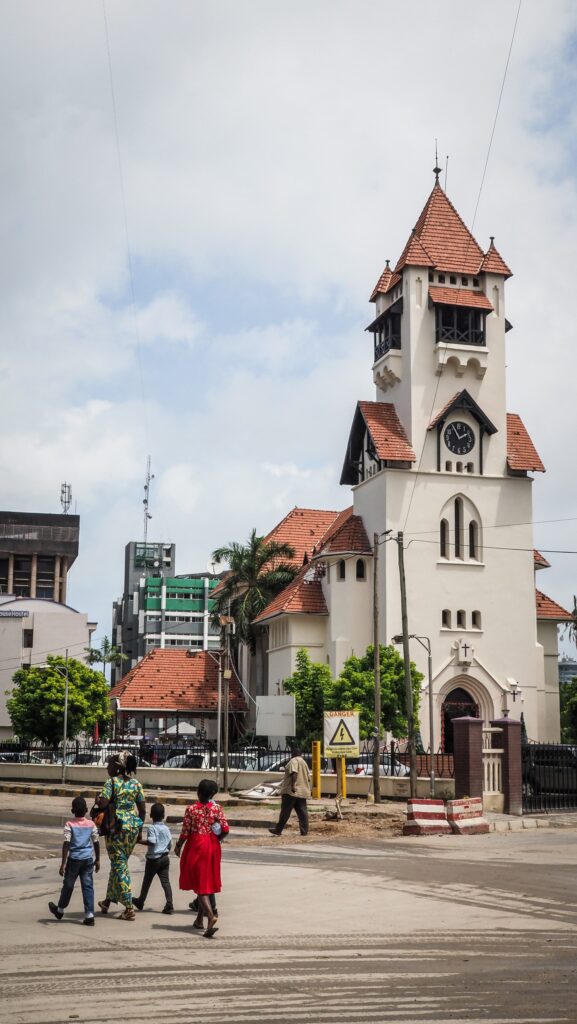
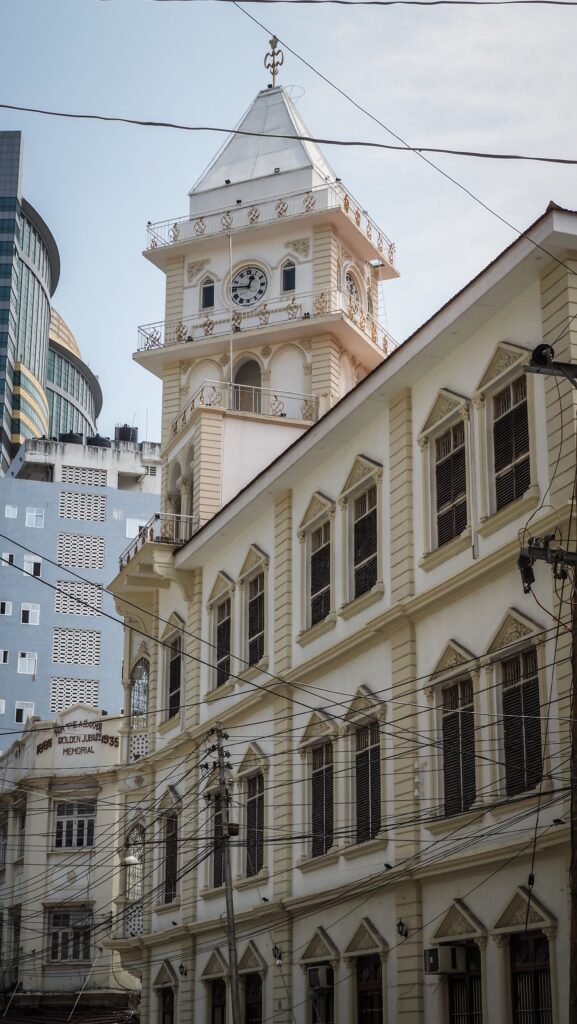
Atiman House
Named after Dr. Atiman, a former slave who later became a respected physician, this colonial-era building carries both architectural and human history. It is one of the city’s preserved heritage structures, representing the personal story of resilience.
Kariakoo Market
Lively, crowded, and full of energy, Kariakoo Market is one of the biggest trading centers in Tanzania. It has been a hub for commerce since the early 20th century, when the Germans used the area as a settlement for freed slaves and later developed it into a market. Today, you can find everything here, fresh produce, clothes, household goods, and street food. It’s the kind of place where you feel the true rhythm of everyday life in Dar es Salaam.
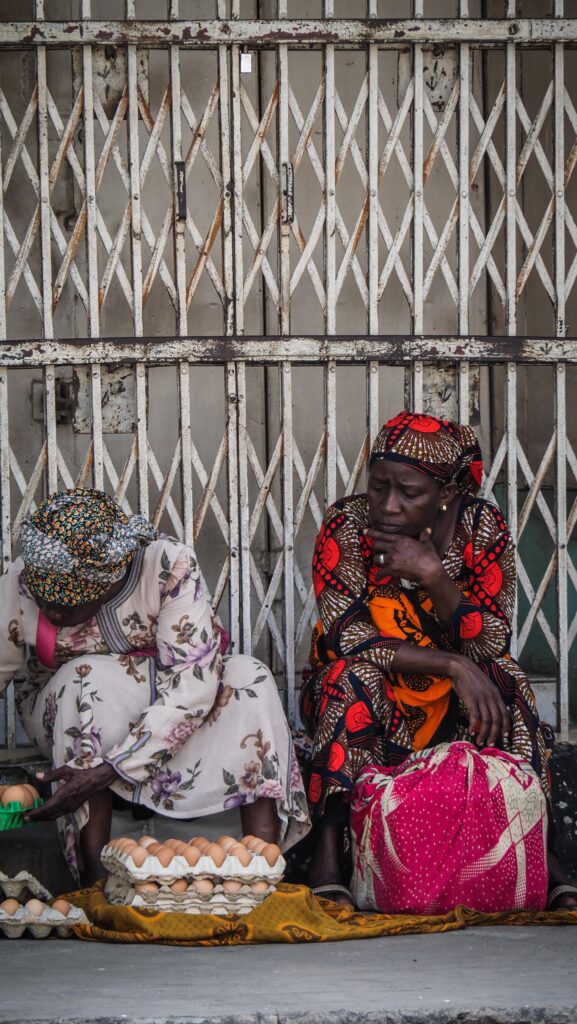
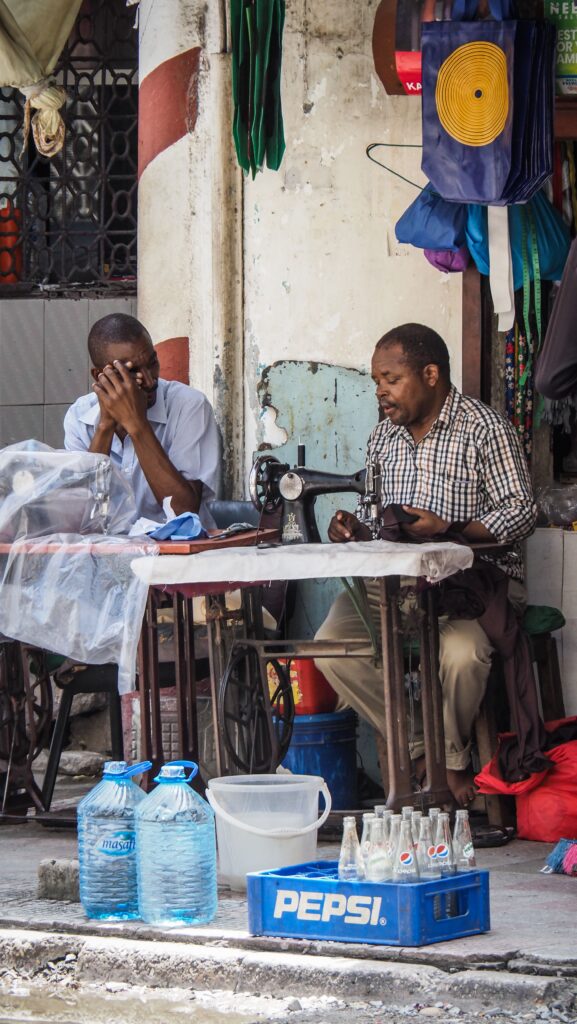

Makumbusho Village Museum
An open-air museum that brings Tanzania’s diverse cultures to life. Instead of displaying objects behind glass, it recreates traditional homes from different ethnic groups across the country. Each hut is built using authentic methods and materials, showing how people live in rural areas.
Visitors can walk from one homestead to another, gaining a sense of the variety in architecture, tools, and daily life. Beyond the structures, the museum often hosts live demonstrations such as traditional dances, drumming, and craft-making.
I highly recommend taking a guide from the entrance as there are no descriptions what you are looking at.
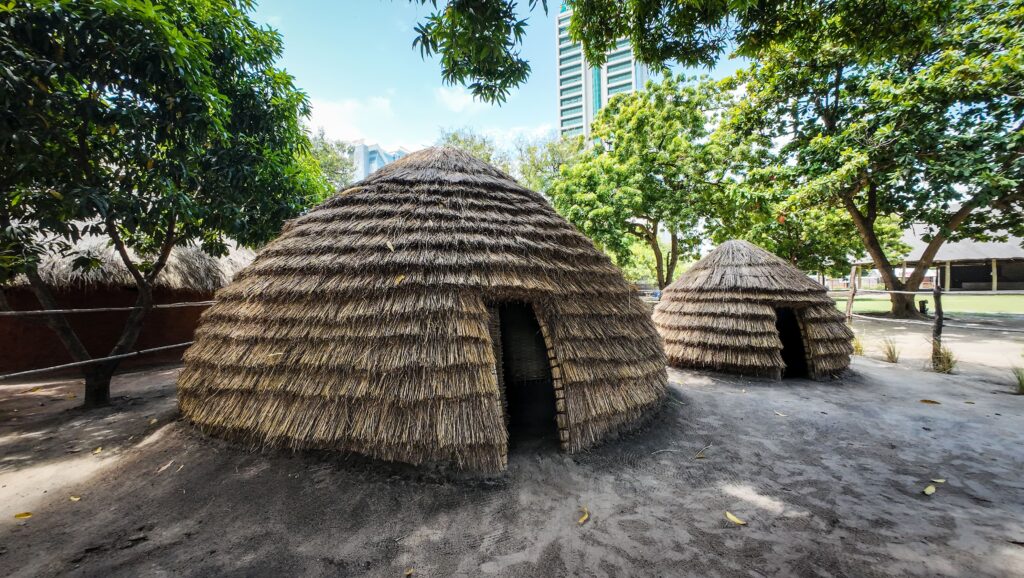
Coco Beach
Located along the Msasani Peninsula, it is a popular spot for both locals and visitors. It’s especially lively on weekends when families, food vendors, and musicians gather by the shoreline. While swimming isn’t always ideal due to currents, it’s a great place for people-watching, enjoying street snacks, and catching the sea breeze.
The Slipway
A favorite hangout for expats and travelers, The Slipway is a waterfront complex with restaurants, shops, and a small craft market. It’s also a departure point for boat trips to nearby islands. The setting is relaxed, with beautiful views of the ocean, especially at sunset.
Tinga Tinga Arts Cooperative Society
This cooperative showcases the famous Tinga Tinga painting style, which originated in Tanzania. The art is known for its bright colors and playful depictions of animals and everyday life. At the cooperative, you can watch artists at work, purchase unique pieces directly, and even learn about the history of the movement.
Mwenge Woodcarvers Market
For souvenirs, Mwenge is the place to go. Here, dozens of artisans sell hand-carved wooden masks, sculptures, and household items, often working on their craft right in front of you.
What to see out of town?
Pugu Hills
Southwest of Dar es Salaam, the Pugu Hills offer a mix of forest, hills, and wildlife. The area is home to one of the world’s oldest known forests, where you can find unique plant species, birds, and small animals. Walking trails lead through lush greenery and up to viewpoints overlooking the city and coastal plains. Besides hiking and birdwatching, the hills are also valued for their caves and sacred sites, which carry cultural importance for local communities. There is also a small lake where you can enjoy kayaking.
The site can be reached by taxi ordered from Uber or Bolt. At the entrance, you will have to register and hire a mandatory guide.
Bongoyo Island
A small, uninhabited island, located about 7 kilometers north of Dar es Salaam. It is a popular destination for locals and tourists seeking a peaceful escape from the city.
The island features a mix of coastal vegetation and some baobab trees. Marine life includes tropical fish and occasional sightings of sea turtles and other aquatic species.
There are basic facilities such as a small restaurant that serves freshly caught seafood and drinks. As soon as you arrive, the local guys will approach you with the menu. Choose whatever you want and say at what time you would like it to be served.
Read more in a separate post HERE.
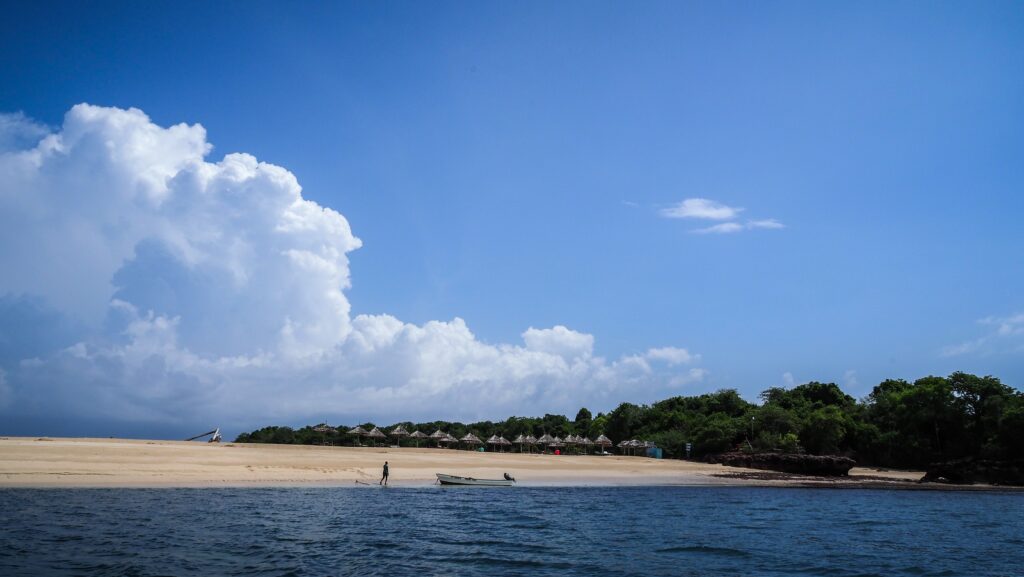
Mbeya Island
Another nearby island which is as well the part of a protected area that helps conserve coral reefs and marine life. Snorkeling and diving around the island reveal colorful corals, tropical fish, and occasionally sea turtles. The atmosphere feels peaceful and unspoiled.

